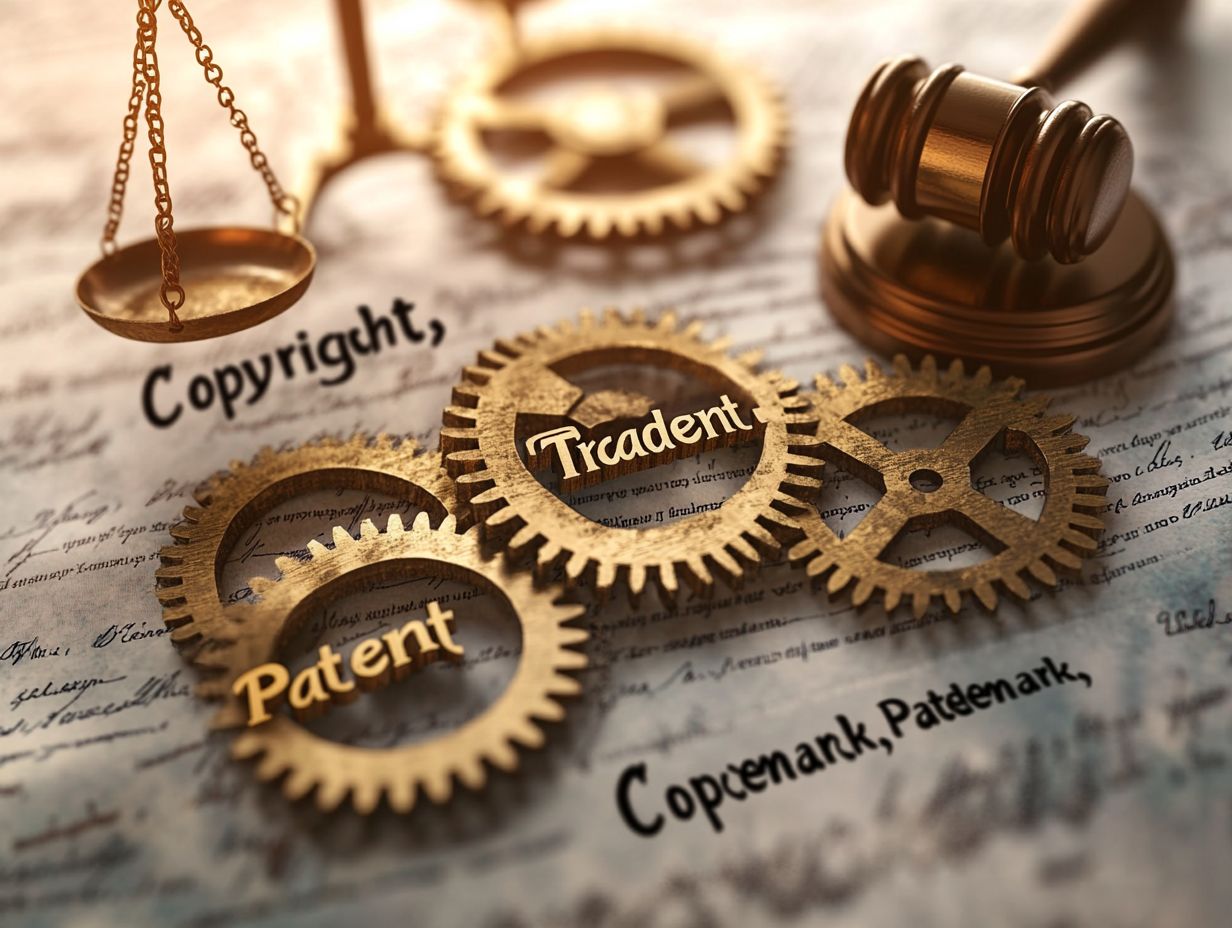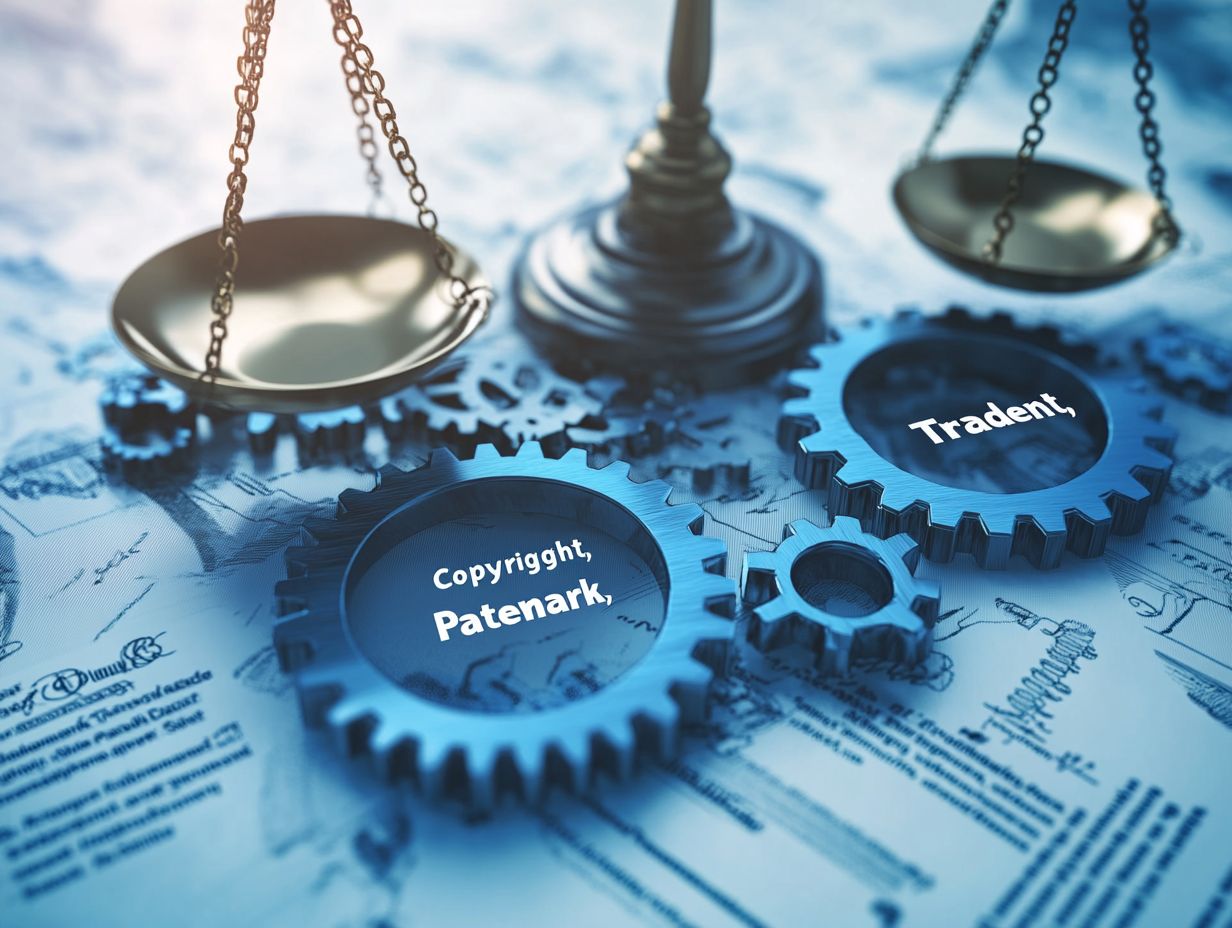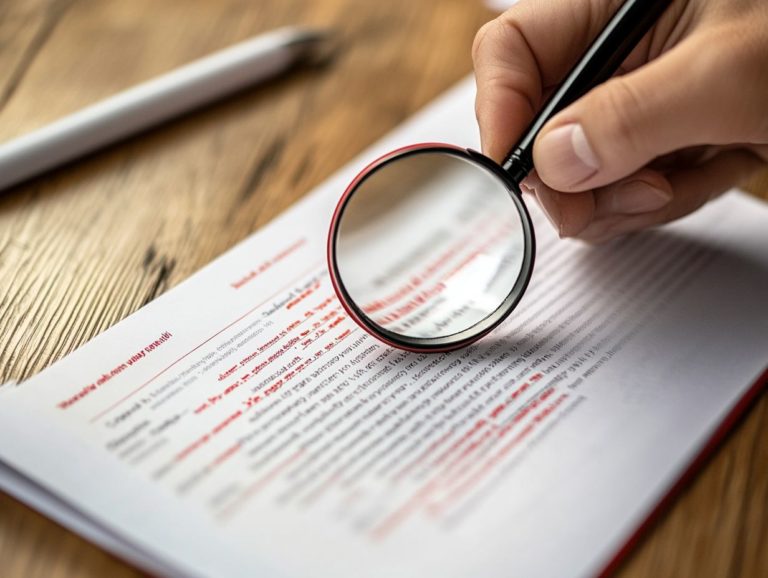The Interconnection of Licensing Agreements and IP Rights
Licensing agreements are pivotal in today s intellectual property (IP) landscape, acting as a vital link between creators and users of various innovations. Understanding these agreements is crucial to your success!
For anyone involved in intellectual property whether you are a business owner, inventor, or legal professional grasping the details of these agreements is essential.
This article delves into the definition and key components of licensing agreements. It also explores the various types available and examines how they intertwine with intellectual property rights.
You ll find practical tips for negotiating, drafting, and enforcing these agreements. This equips you to navigate this critical area with confidence.
Dive in to uncover how you can protect your ideas and unlock their full potential through effective licensing strategies.
Contents
Key Takeaways:

Licensing agreements set the rules for using and sharing your ideas. There are different types of agreements that serve various purposes, like patent and copyright licenses. Negotiating and drafting these agreements require careful consideration and can significantly impact enforcement and protection.
Understanding Licensing Agreements
Licensing agreements serve as essential legal frameworks that facilitate the transfer of intellectual property rights, as outlined in the legal framework of licensing agreements, from one party giving permission to another party receiving permission.
These agreements clearly outline the ownership of IP rights, covering forms such as trademarks, patents, and copyrights. Each plays a crucial role in shaping revenue streams and enhancing competitive advantage in the market.
As the legal landscape becomes more intricate, understanding the nuances of these agreements is vital for managing your rights and obligations. This ensures that appropriate legal remedies are in place to protect against potential disputes.
Definition and Key Elements
Licensing agreements are legally binding contracts that delineate the rights and obligations between the parties involved. These contracts outline essential provisions such as the scope of usage rights and the duration of the agreement.
Important elements include:
- Licensing fees
- Conditions for termination
- The permissible uses of the intellectual property
Indemnification clauses safeguard against third-party claims, offering protection for all parties involved. By grasping these aspects, you can navigate the legal frameworks governing your business relationships more effectively.
Types of Licensing Agreements
Licensing agreements can be categorized into distinct types, each tailored to fulfill varying strategic objectives within intellectual property. Among these, exclusive and non-exclusive licenses stand out.
An exclusive license grants the licensee sole rights to the intellectual property, effectively shutting others out. In contrast, a non-exclusive license permits multiple licensees to use the same IP, fostering broader collaboration.
Understanding these distinctions is essential for technology transfer initiatives and joint ventures, as they drive economic growth and enhance competitive advantage.
Exploring Different Types and Their Uses
Different licensing agreements cater to various forms of intellectual property, such as trademarks, patents, copyrights, and trade secrets. Each type plays a pivotal role in how you, as a creator or business, manage your innovations and branding.
For example, royalty payments tied to patents allow inventors to monetize technological advancements by granting rights to manufacturers. Meanwhile, trademark licensing protects brand identity by allowing retailers to sell products under established marks.
Copyright licensing ensures that creators of artistic works whether music, literature, or beyond receive fair compensation for their use. Understanding these distinctions is essential for effective IP management.
Ready to protect your ideas? Let s dive deeper into licensing agreements!
Intellectual Property Rights

Intellectual property rights are crucial legal safeguards. They give you control over non-physical property like copyrights, trademarks, patents, and trade secrets.
These rights are designed to boost innovation. They grant you exclusive ownership and usage privileges, helping you maximize your intellectual property s potential.
Understanding IP rights is essential for businesses and individuals alike. They play a key role in maintaining a competitive edge and driving economic growth in our knowledge-driven world.
Overview of IP Rights and Their Importance
Intellectual property rights secure ownership and protect the interests of creators and innovators. They create a framework for legal remedies against infringement.
With these protections, you can pursue your endeavors without worrying about your ideas being exploited. This safety encourages you to invest time and resources into developing new products or technologies.
Such protection attracts investment and helps maintain your competitive advantage. Look at companies like Apple and Samsung; they effectively use their intellectual property to distinguish themselves and gain market benefits.
How Licensing Agreements Relate to IP Rights
Licensing agreements are essential for transferring and managing ownership across various forms of IP, and they intertwine deeply with the role of licensing agreements in intellectual property rights.
Impact of Licensing Agreements on IP Rights
Licensing agreements significantly influence how you can use and monetize your IP rights. They define ownership and usage rights, shaping the dynamics between your business and third parties, and understanding the relationship between licensing agreements and trade secrets is crucial for navigating these complexities.
For instance, when a major tech company licenses software to a startup, it can complicate relationships with other IP holders. Navigating this balance between innovation and legal protection is crucial.
Licensing can promote collaboration, but it can also lead to disputes over unintentional infringements. The music industry illustrates this; agreements lead to both lucrative partnerships and contentious lawsuits.
Negotiating and Drafting Licensing Agreements
Negotiating and drafting licensing agreements require a solid understanding of legal and business aspects. Ensure that every contract provision is clearly defined and mutually beneficial for a successful partnership.
Tips for Successful Negotiation and Drafting

Successful negotiation and drafting depend on understanding the rights and obligations of all parties. This insight helps everyone articulate their needs clearly.
Encourage open dialogue and clarify intentions through questions. Establish clear definitions for key terms to avoid ambiguity this builds a fair agreement.
By prioritizing mutual understanding, you can cultivate trust and strengthen relationships. This enhances the potential for future projects and collaborations.
Enforcing Licensing Agreements and Protecting IP Rights
Enforcing licensing agreements and safeguarding intellectual property rights is critical for licensors and licensees in today’s competitive marketplace, especially regarding the role of licensing agreements in mergers and acquisitions.
Legal Options and Strategies for Enforcement
You have a range of legal options to enforce licensing agreements. Understanding these strategies is crucial because they can significantly affect legal outcomes.
Mediation and arbitration offer effective alternatives to lengthy litigation. These methods often lead to quicker resolutions while preserving important business relationships.
By taking proactive measures like drafting clear terms and conducting thorough due diligence you can substantially reduce the risks associated with third-party claims.
Stay informed about your rights and obligations to navigate the complexities of licensing agreements more effectively. Get ready! Being prepared means you can act swiftly if you need to enforce your rights.
Frequently Asked Questions
What are licensing agreements?

Licensing agreements are legal contracts that allow someone to use someone else’s intellectual property (IP). These contracts outline the terms and conditions, including the scope of the license, duration, and any restrictions or limitations, which are essential for understanding the role of licensing agreements in innovation.
What is the interconnection between licensing agreements and IP rights?
The interconnection refers to the legal relationship between the IP owner and a third party who is granted permission to use that IP in exchange for compensation, usually a licensing fee, as explored in the relationship between licensing agreements and trade marks.
What are IP rights?
IP rights refer to the exclusive legal rights granted to the creator of an original work, such as a patent, trademark, or copyright. These rights protect the owner’s ability to use, sell, or license their IP and prevent unauthorized use.
How are licensing agreements and IP rights connected?
Licensing agreements connect by allowing a third party to use the owner’s IP in exchange for compensation. To fully grasp this process, understanding licensing agreements in IP strategy is essential; without ownership of IP rights, the owner cannot legally enter into a licensing agreement.
Can licensing agreements be used for all types of IP?
Yes, licensing agreements can be used for all types of IP, including patents, trademarks, and copyrights. These agreements specify the terms and conditions regardless of the IP type being licensed.
What happens if a licensing agreement is violated?
If a licensing agreement is violated, act immediately! The IP owner can seek damages or terminate the agreement. It’s essential for both parties to understand and follow the terms to avoid any potential violations.






